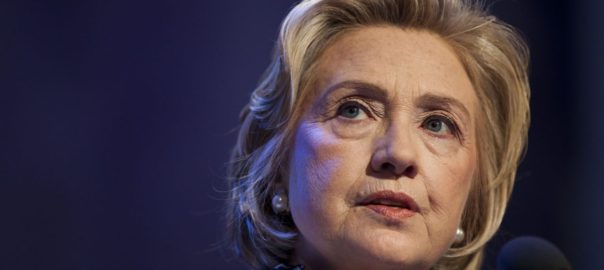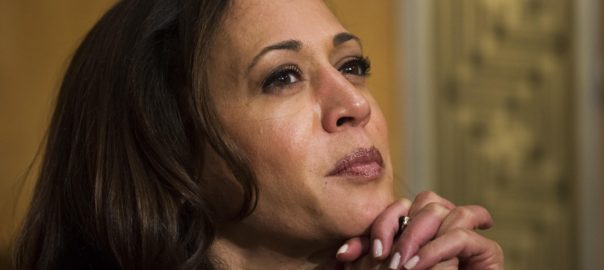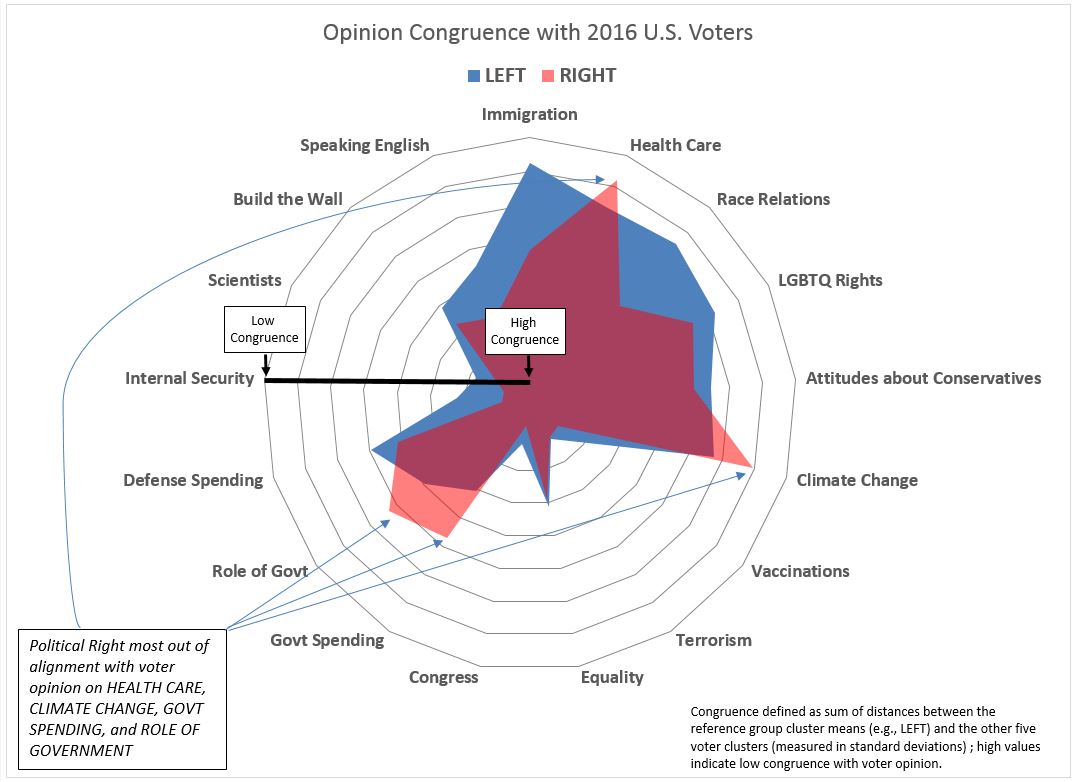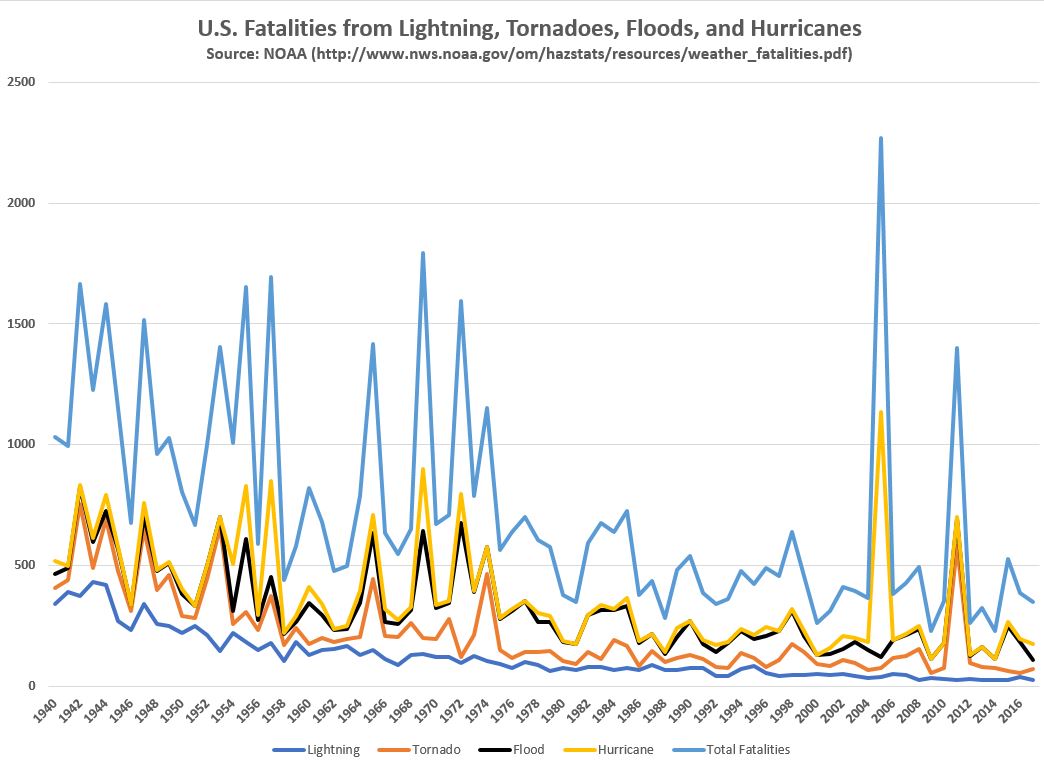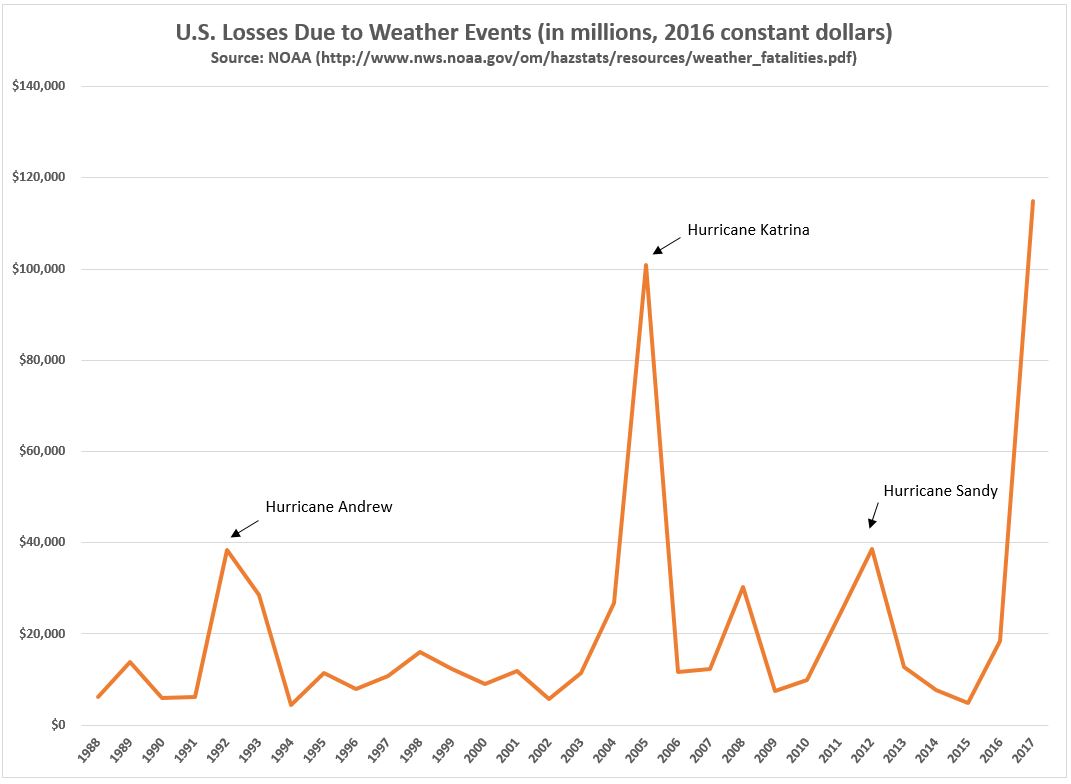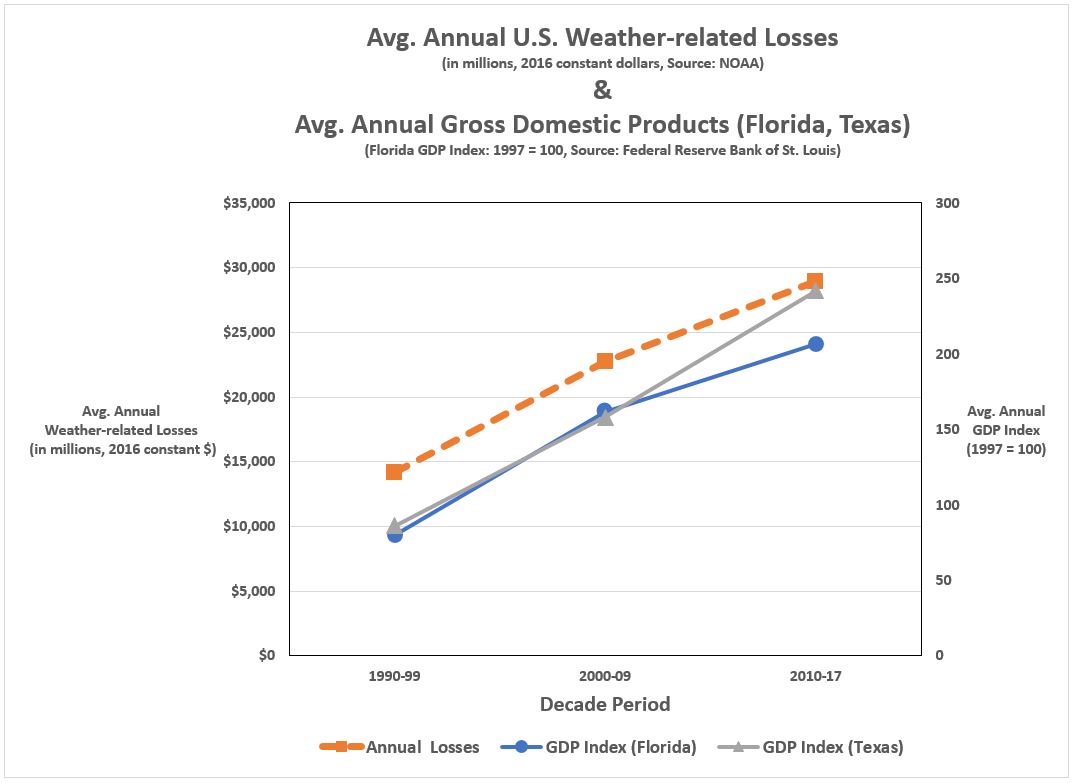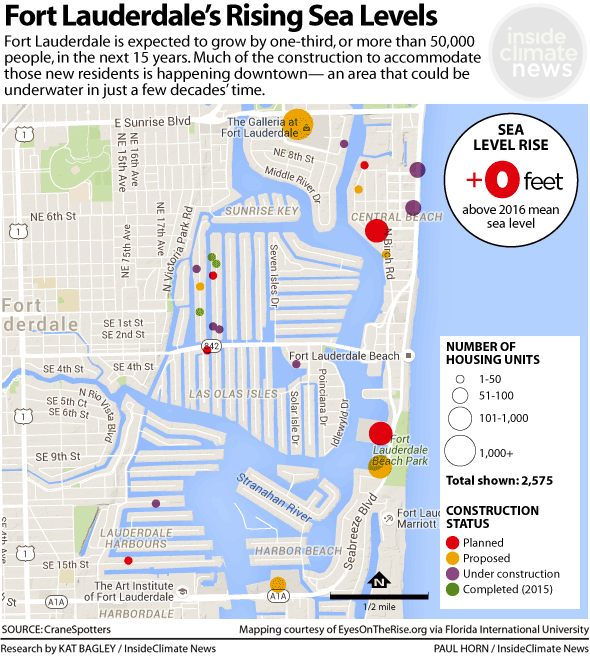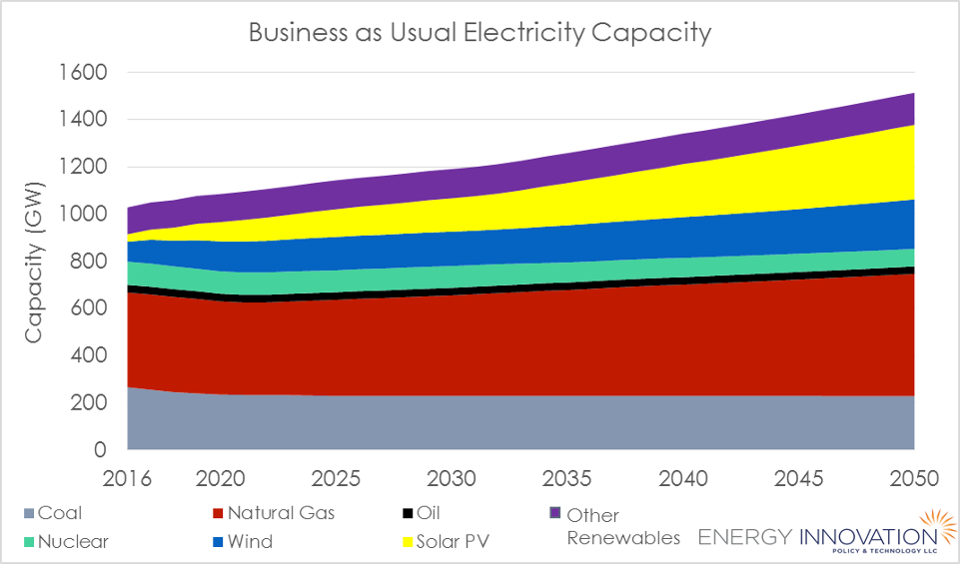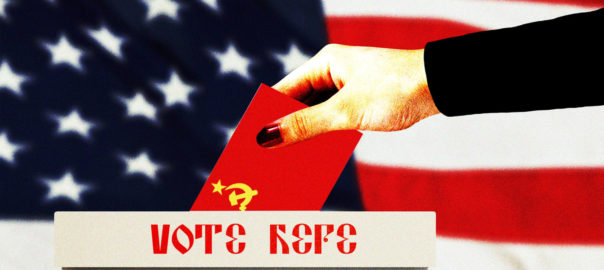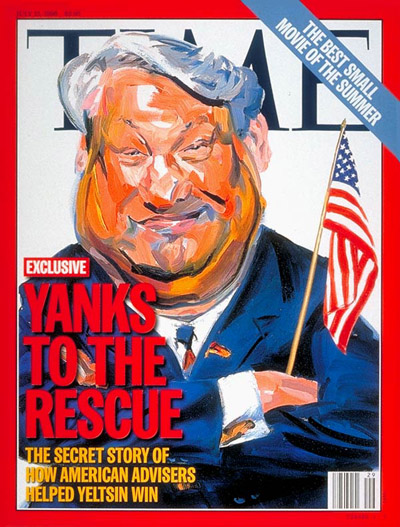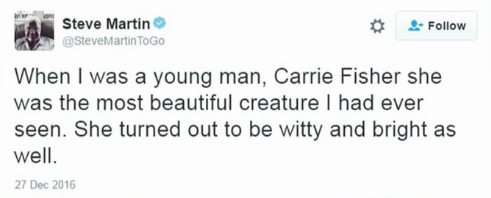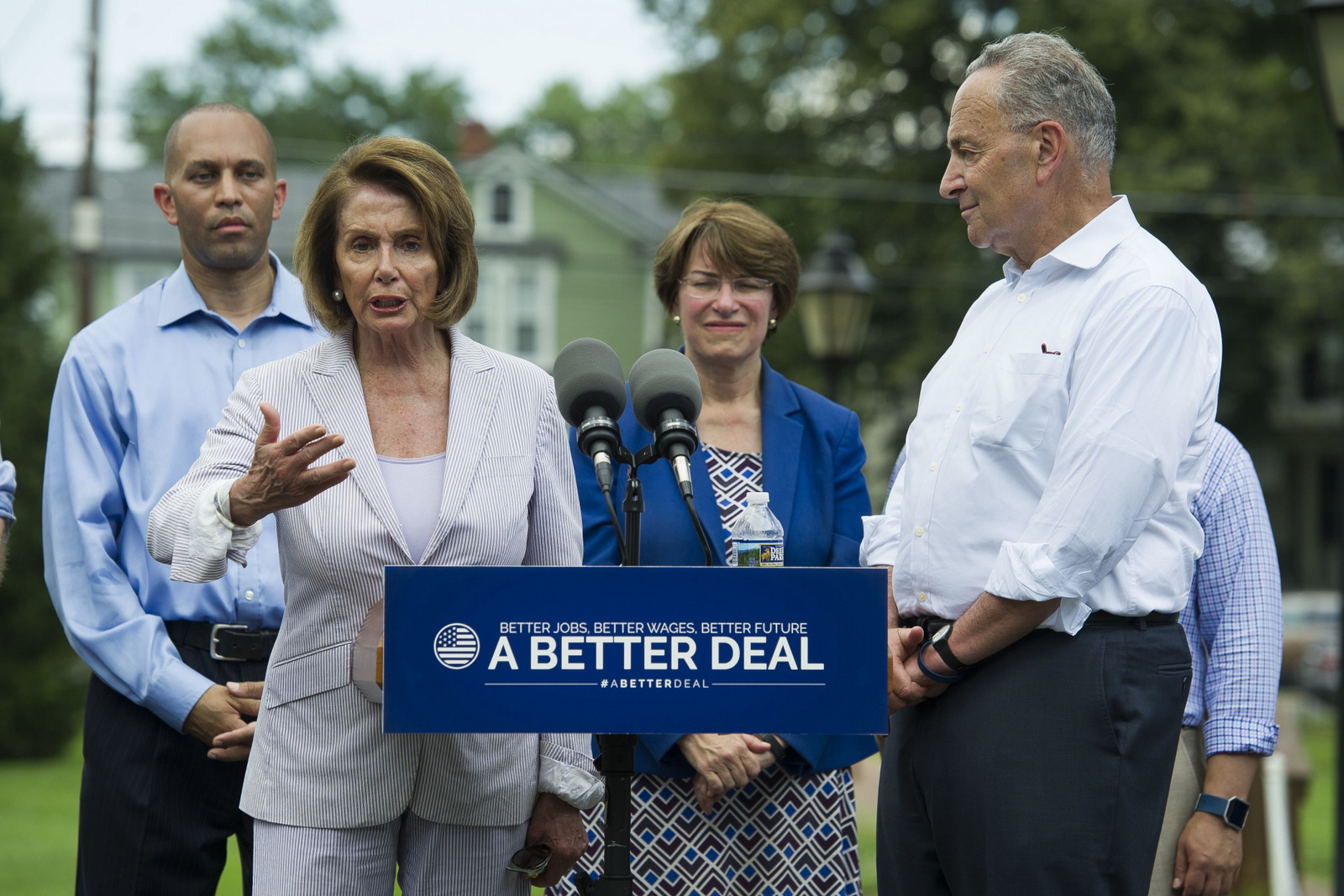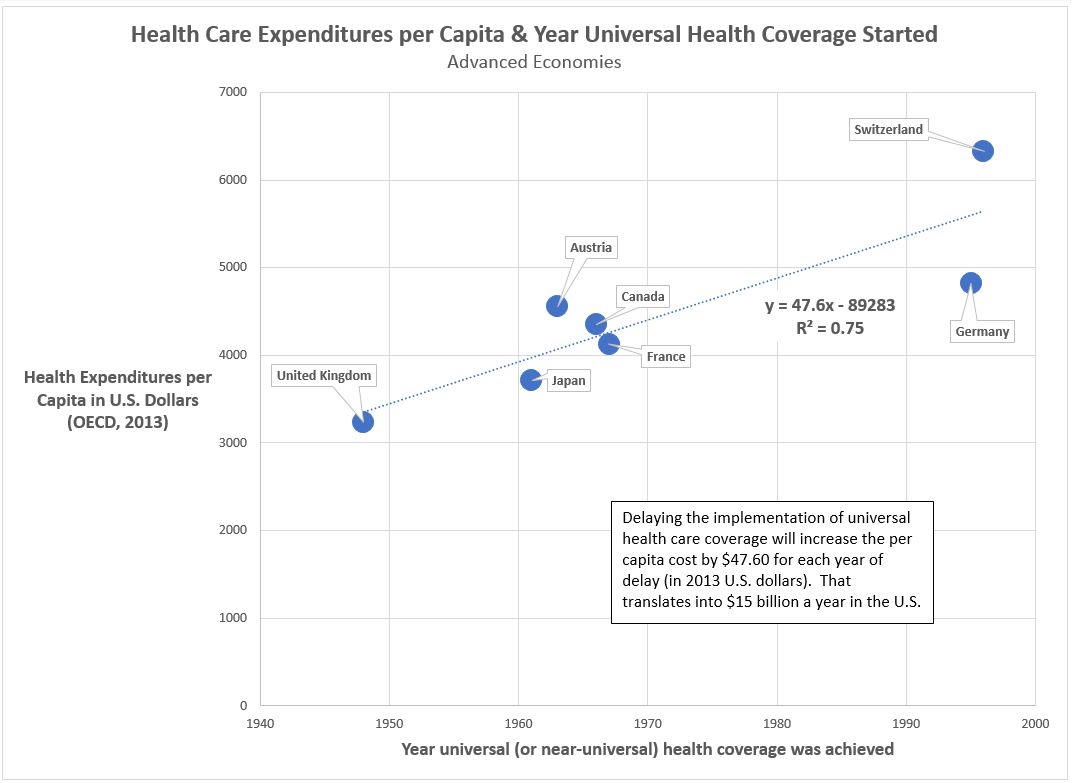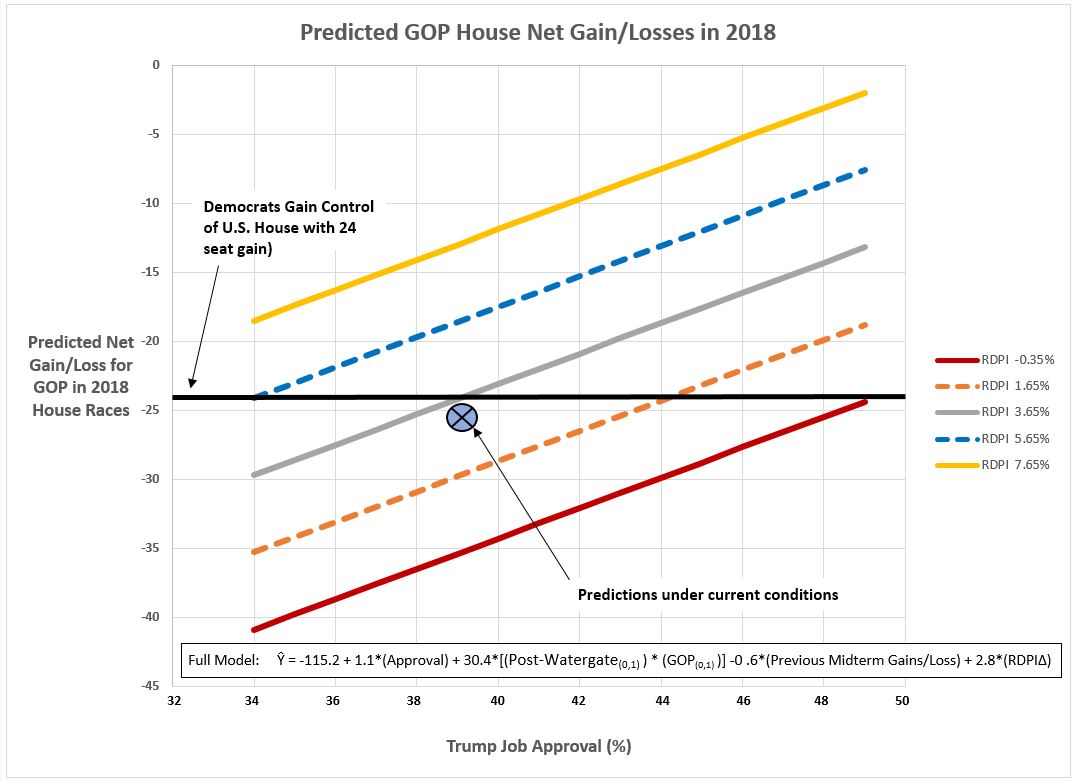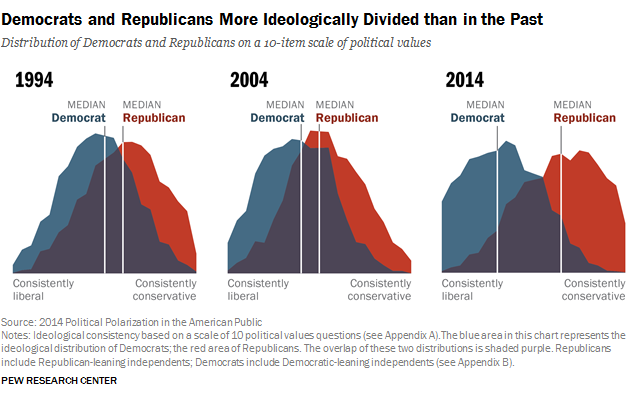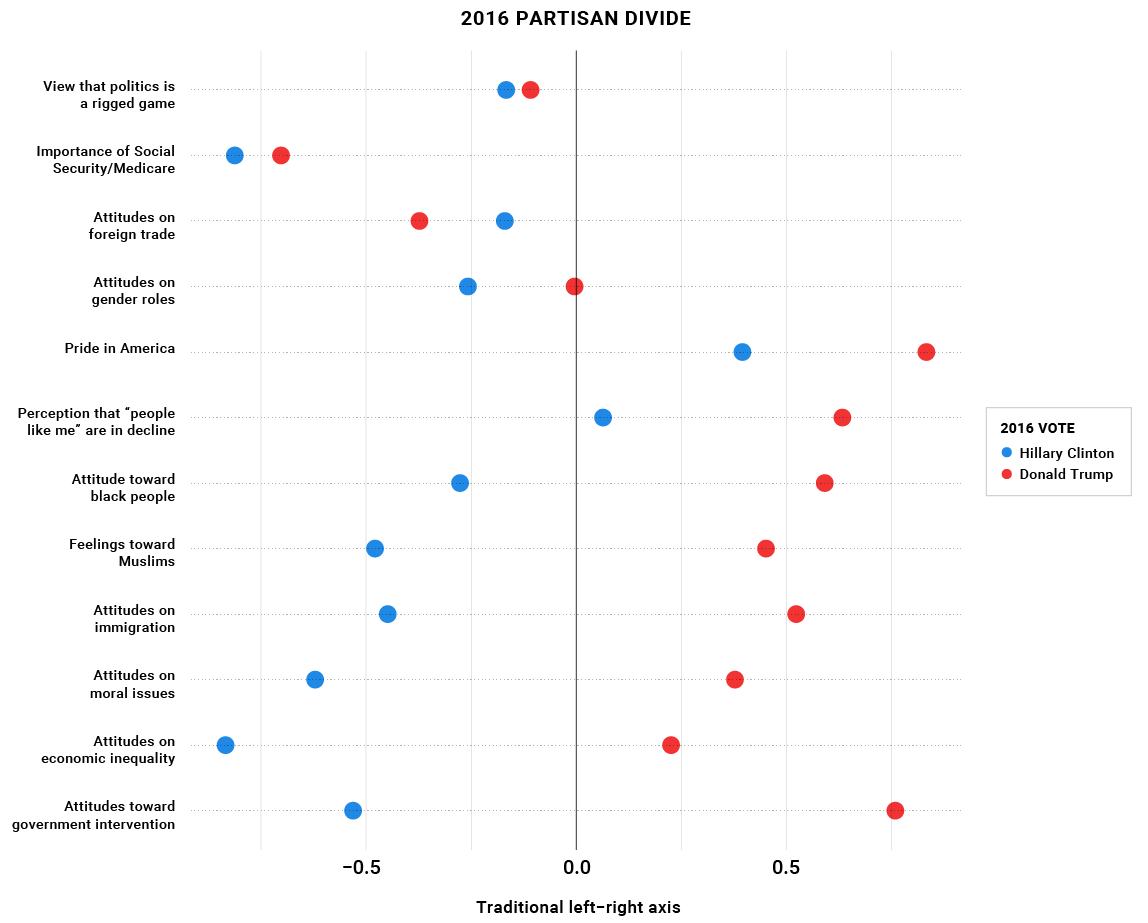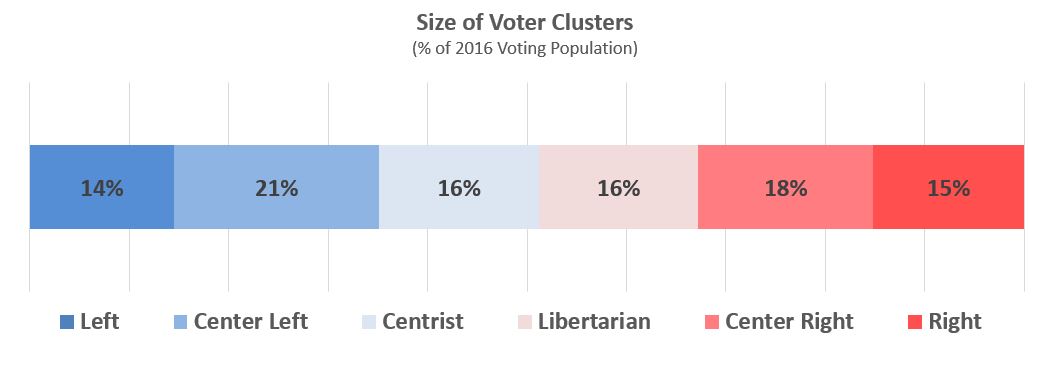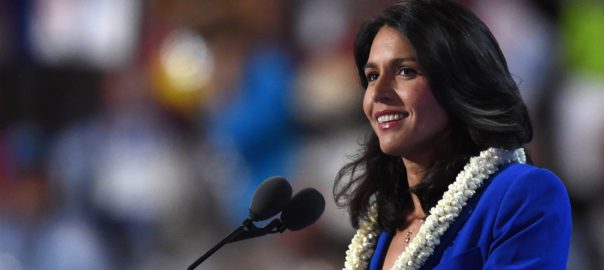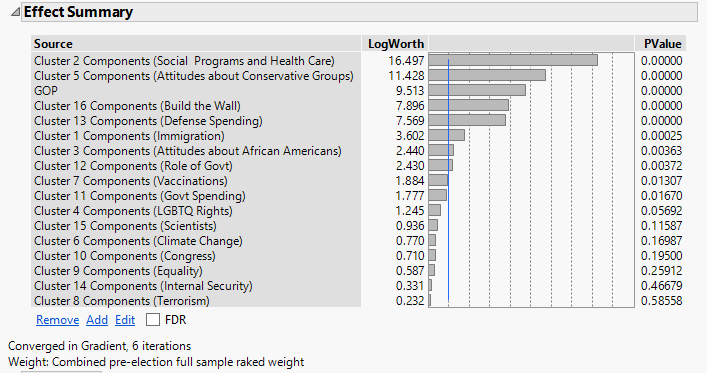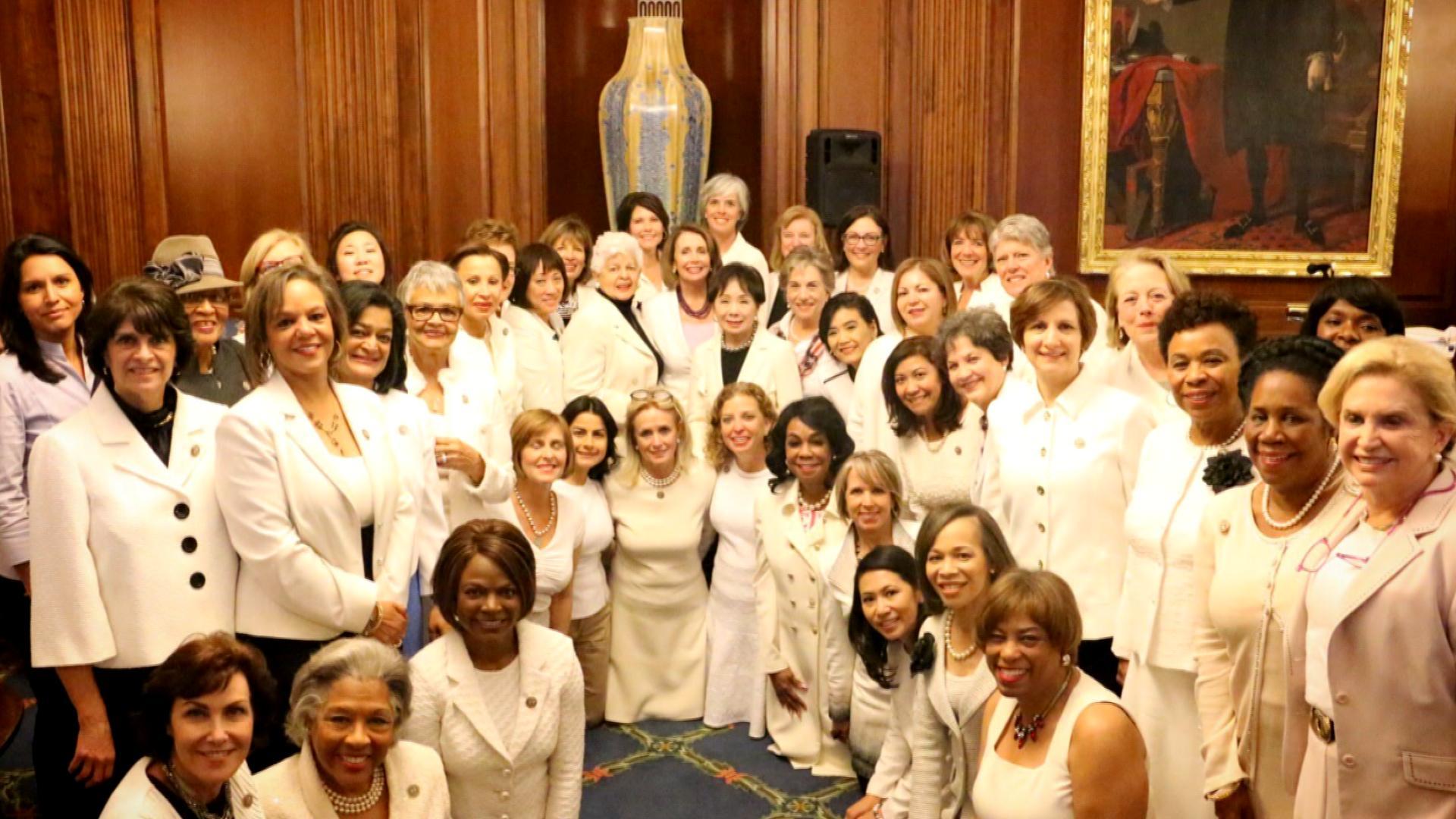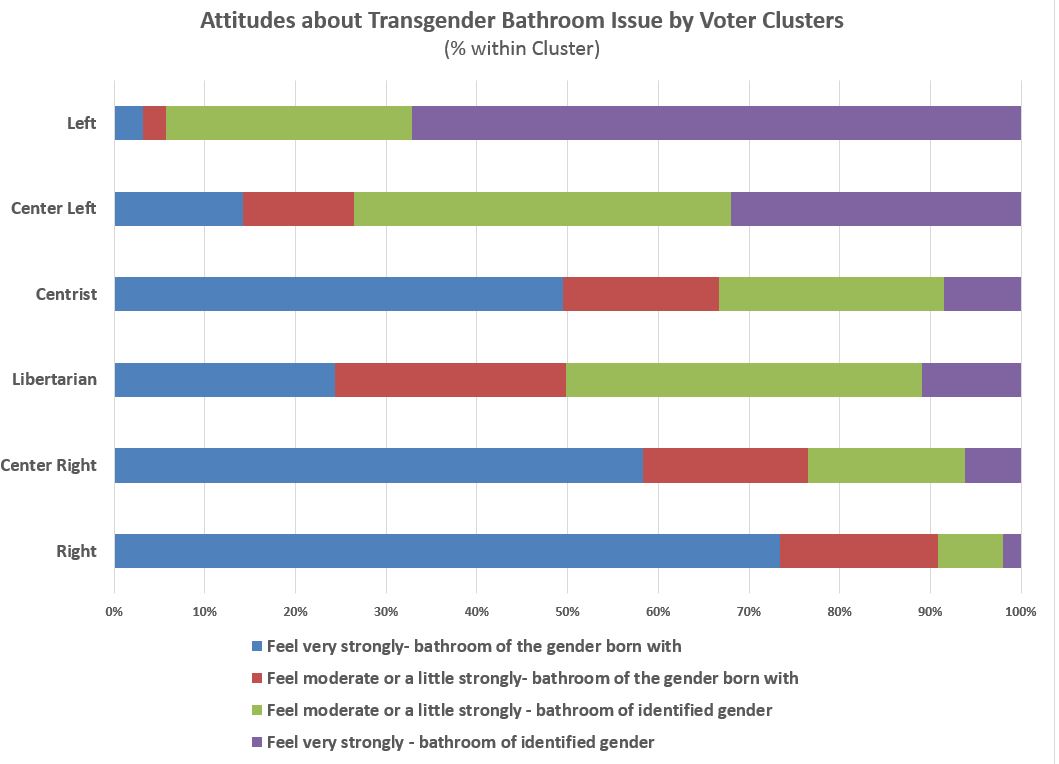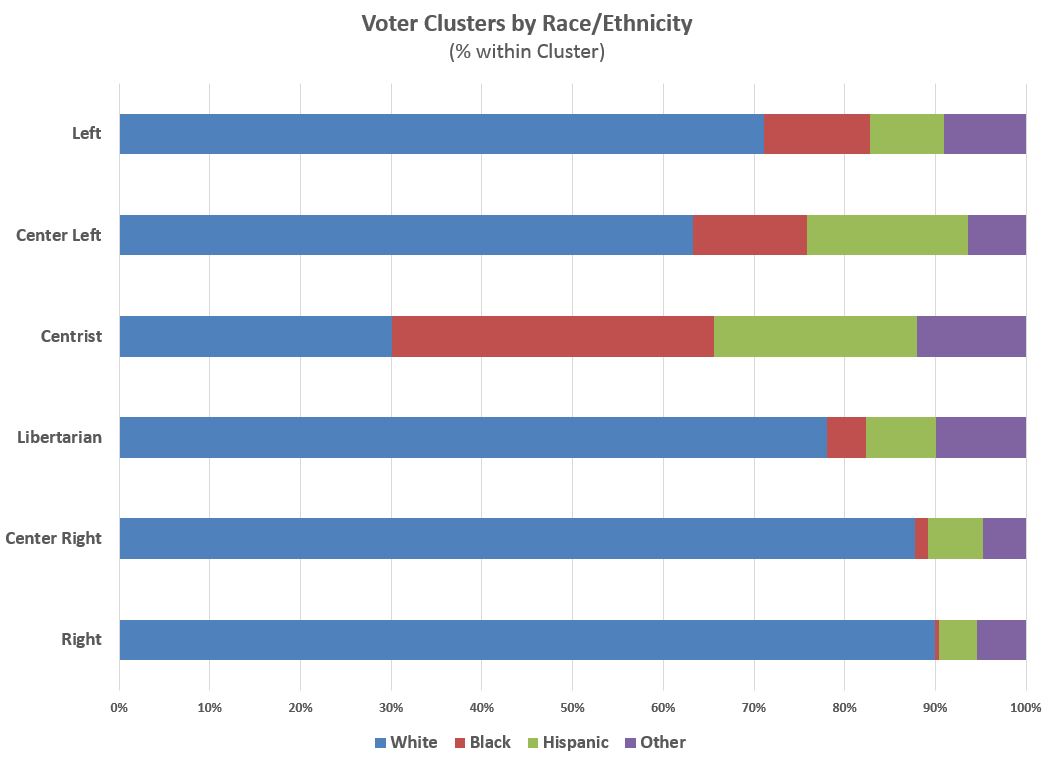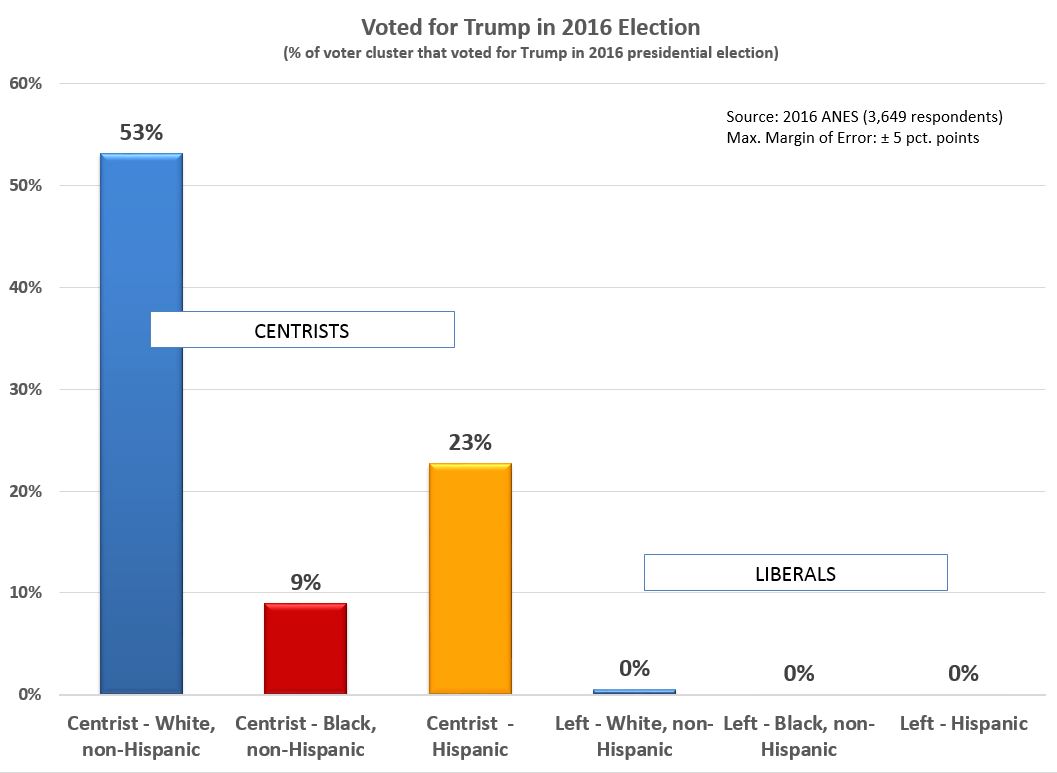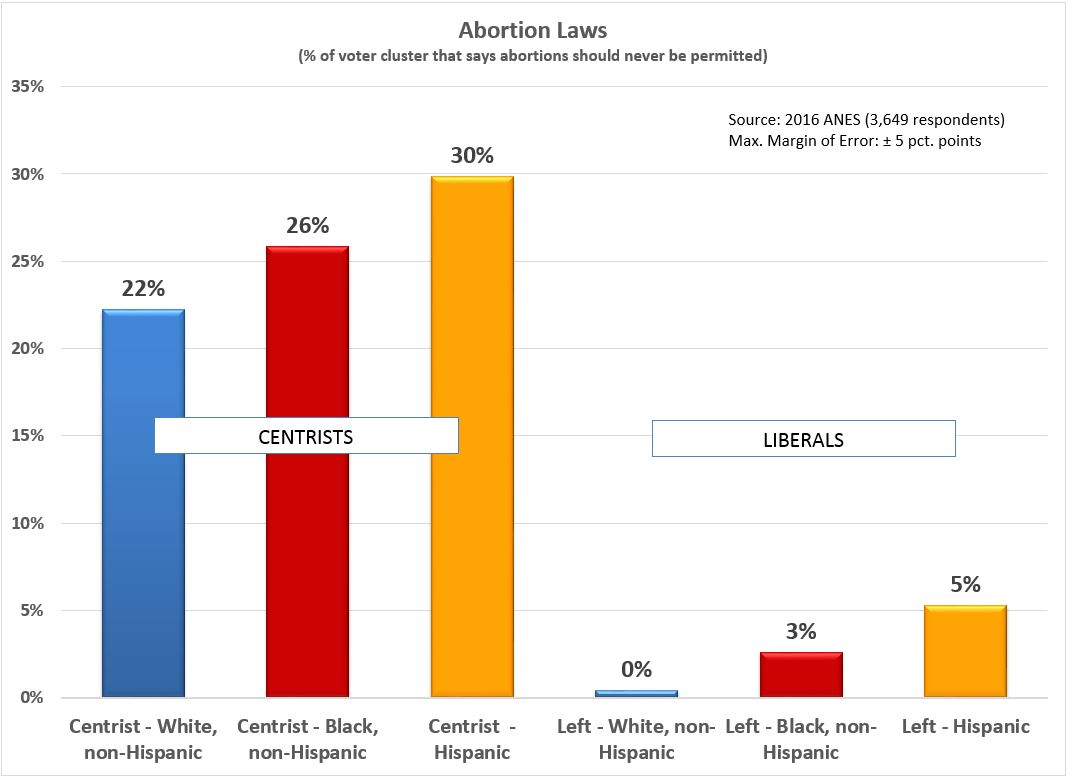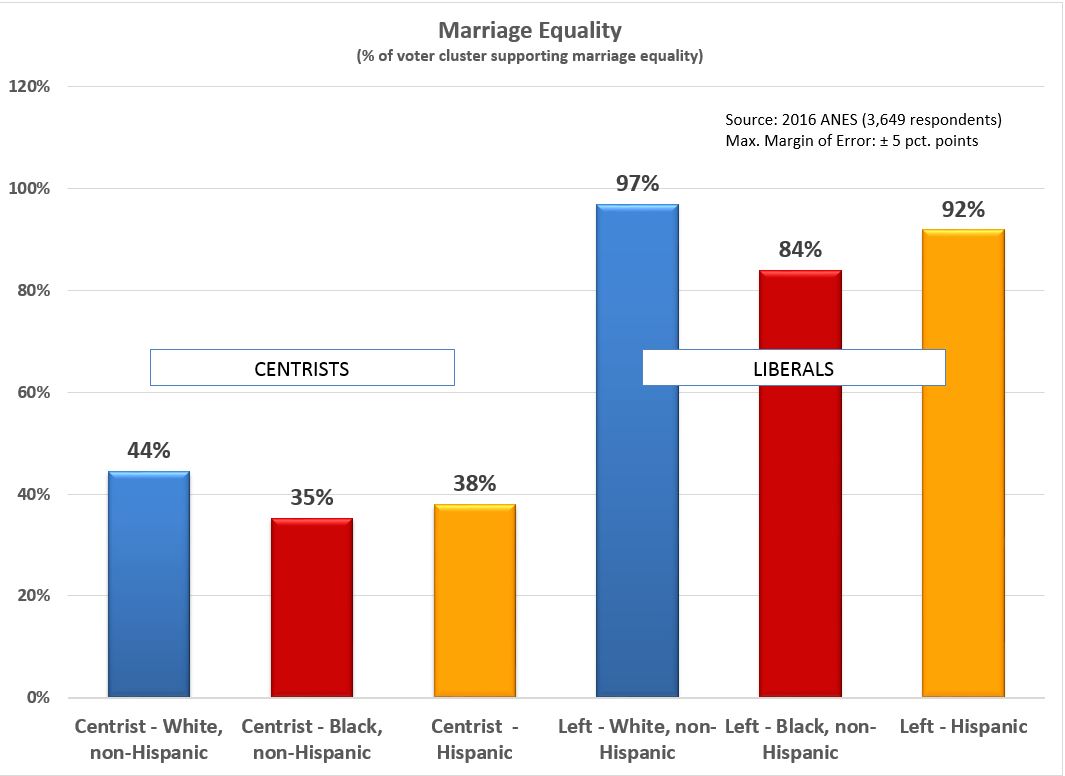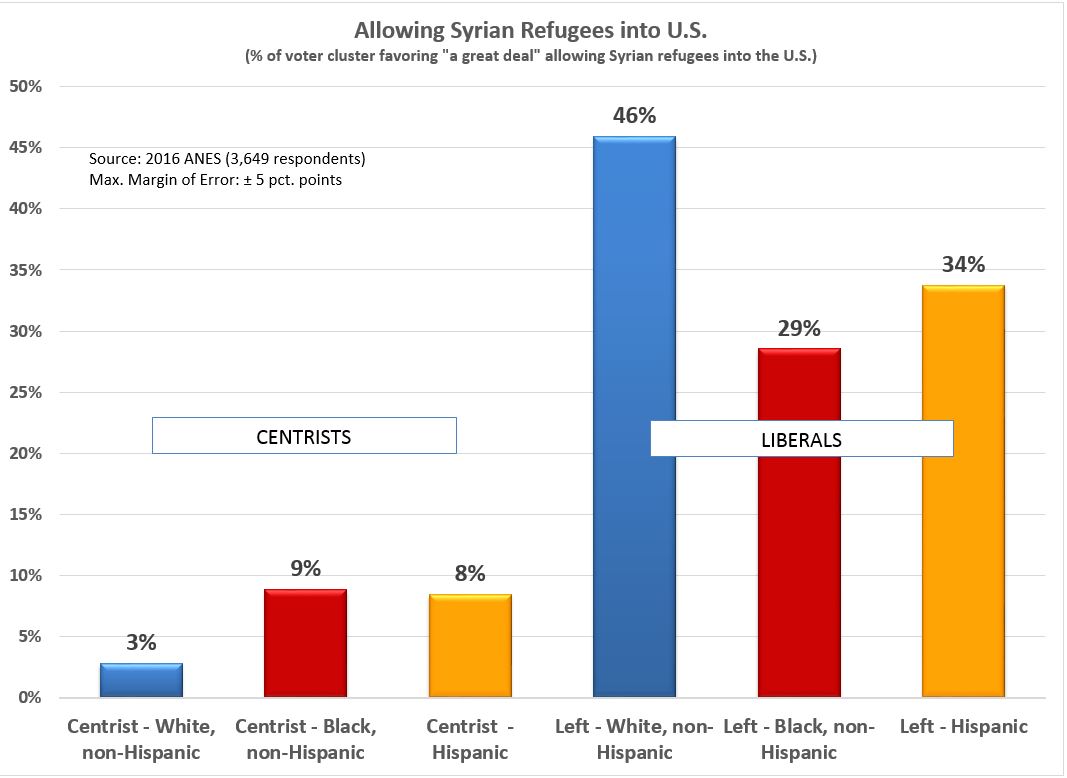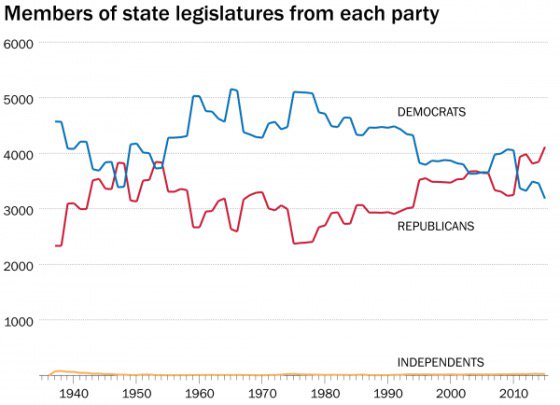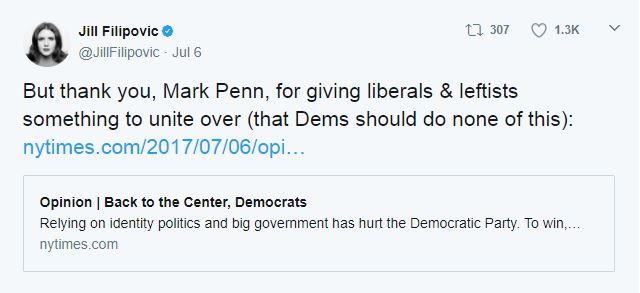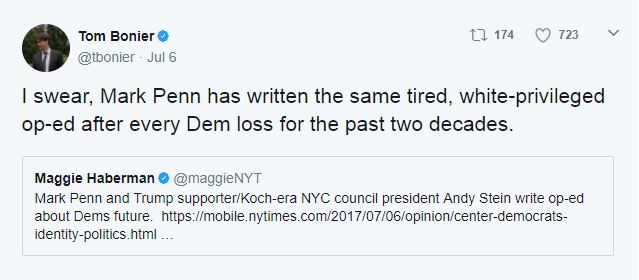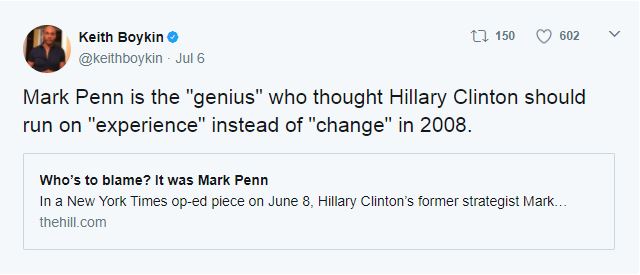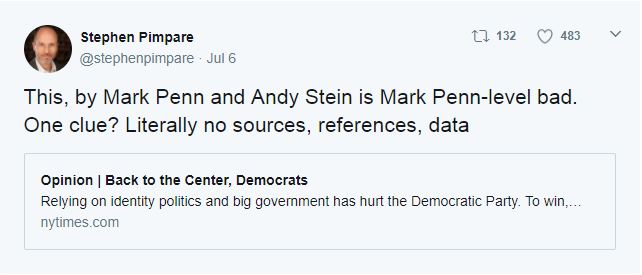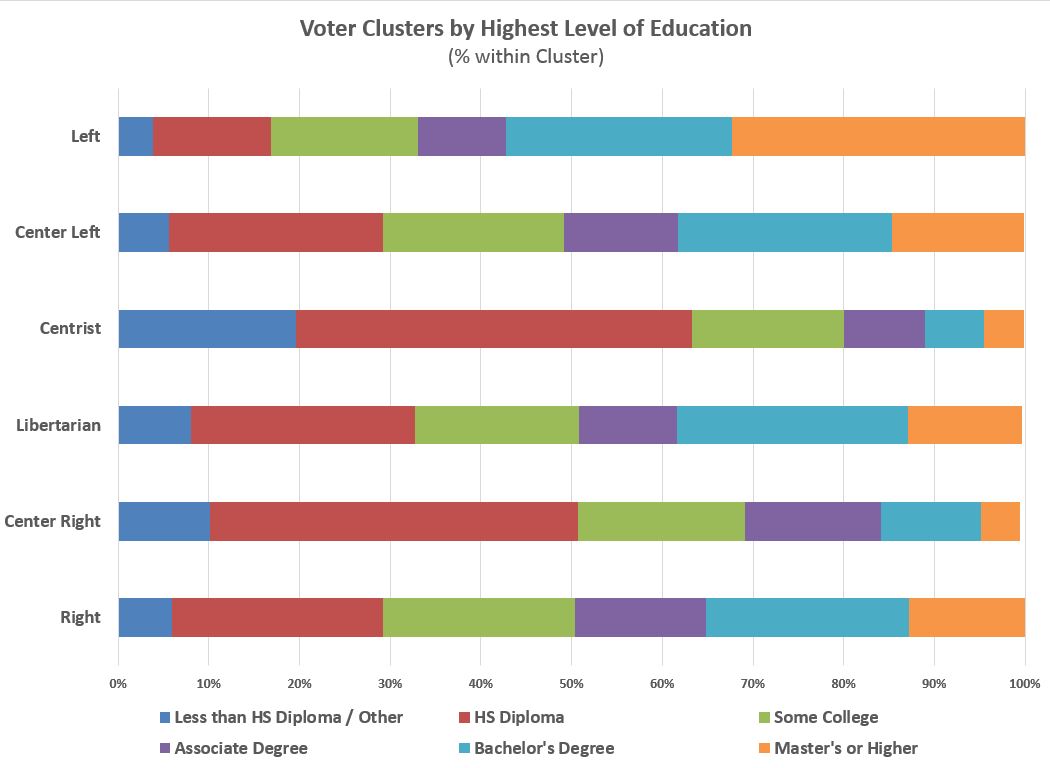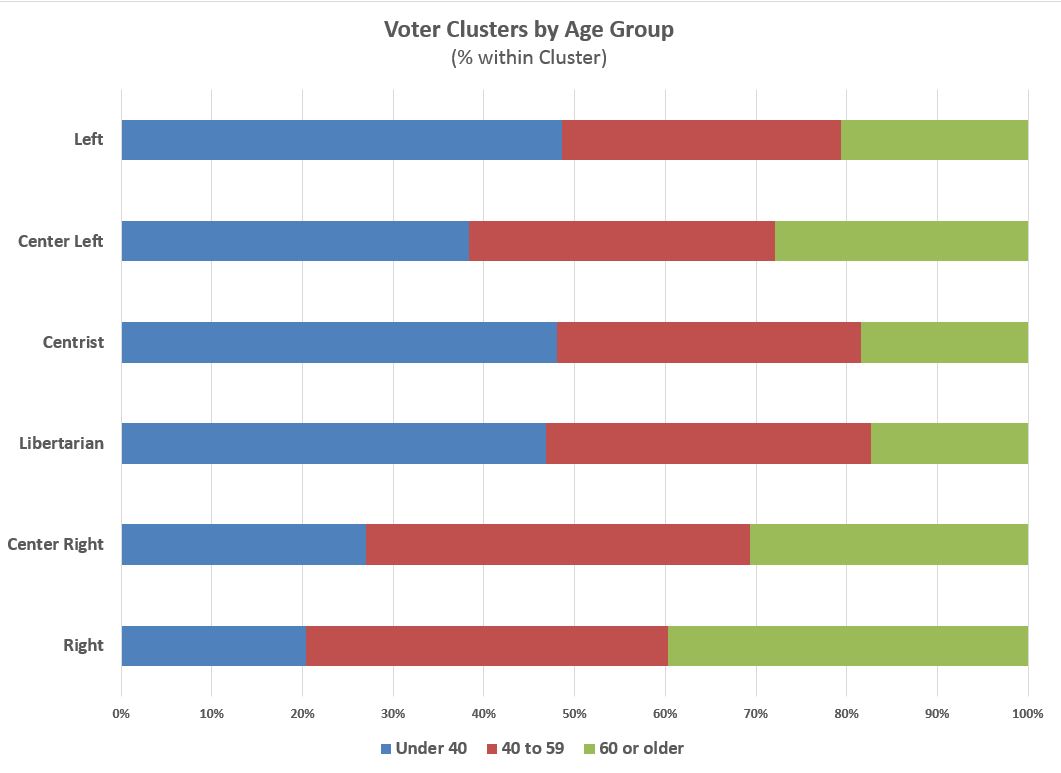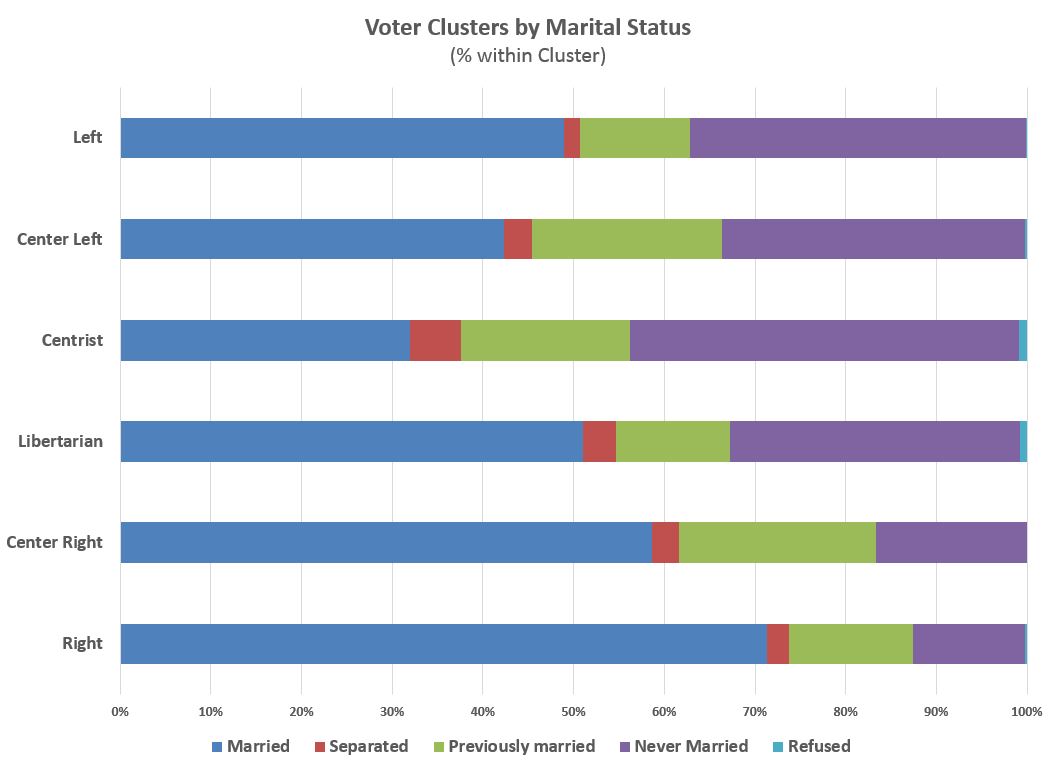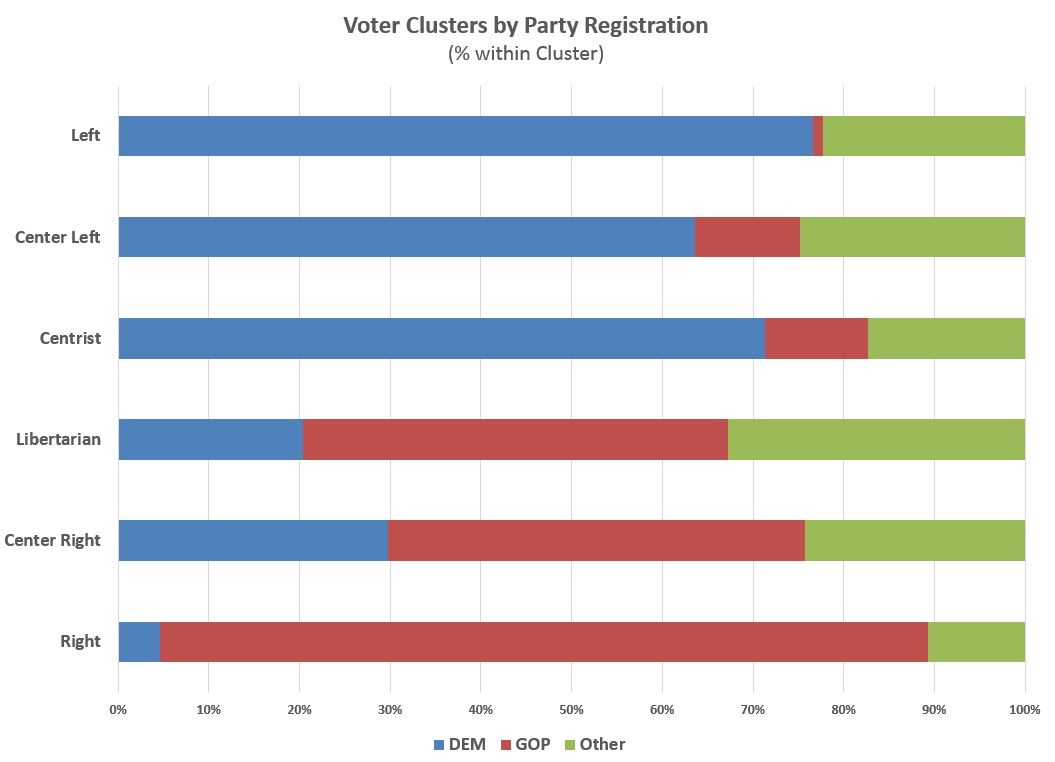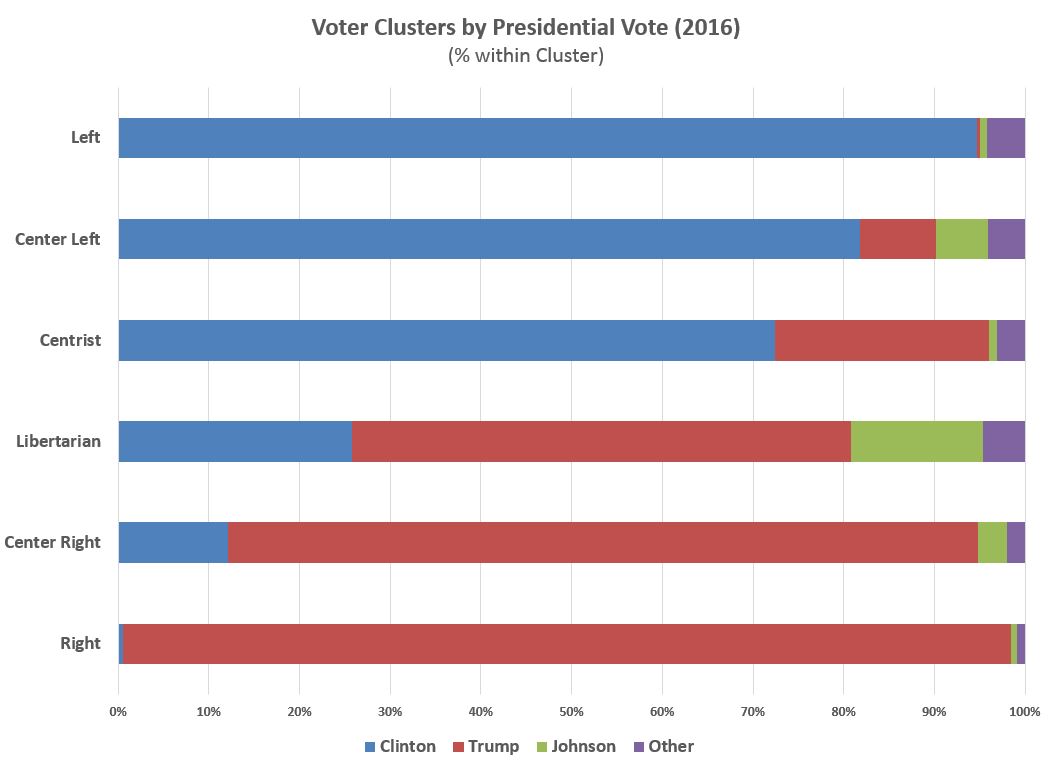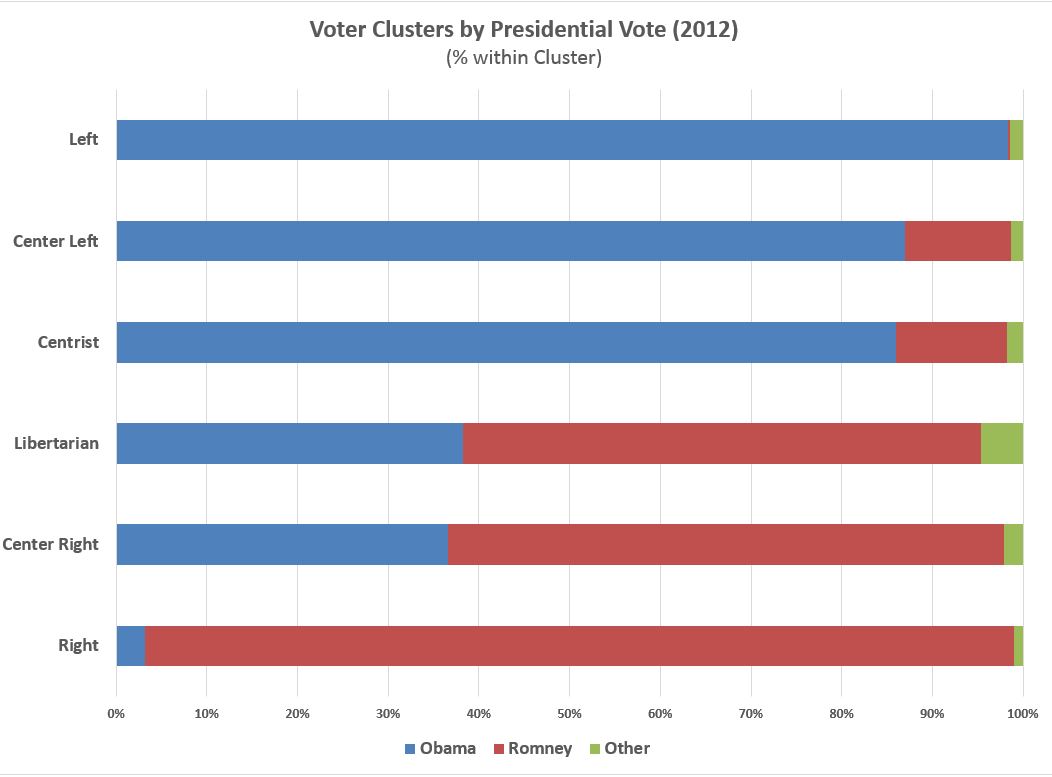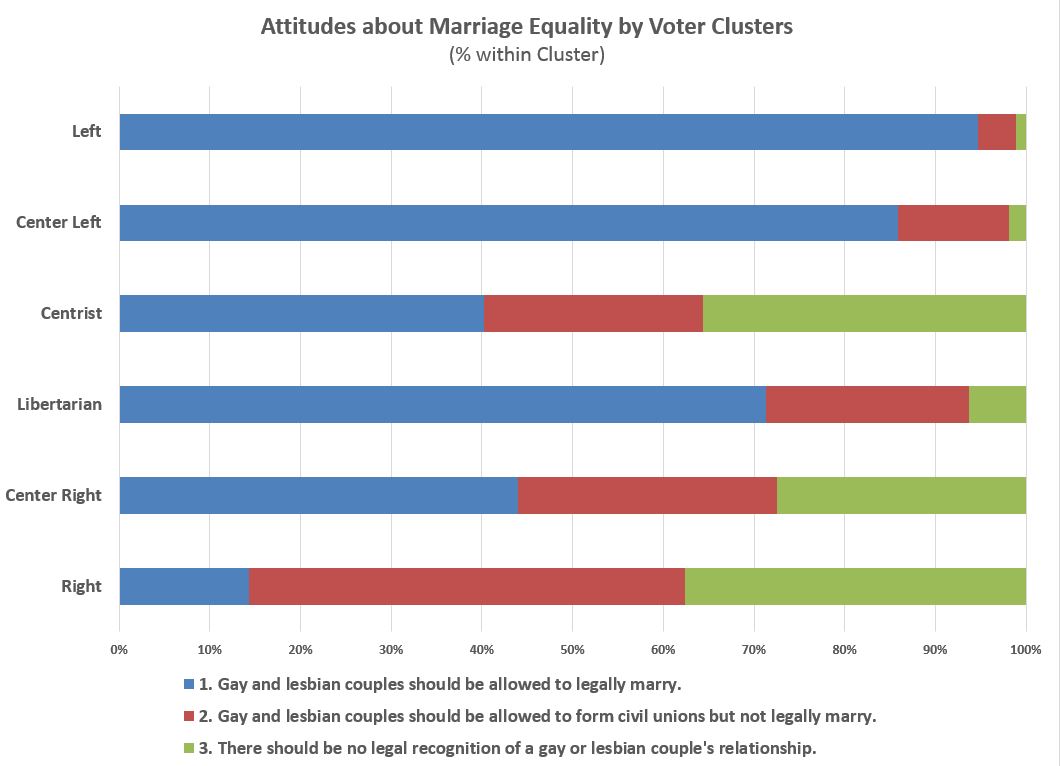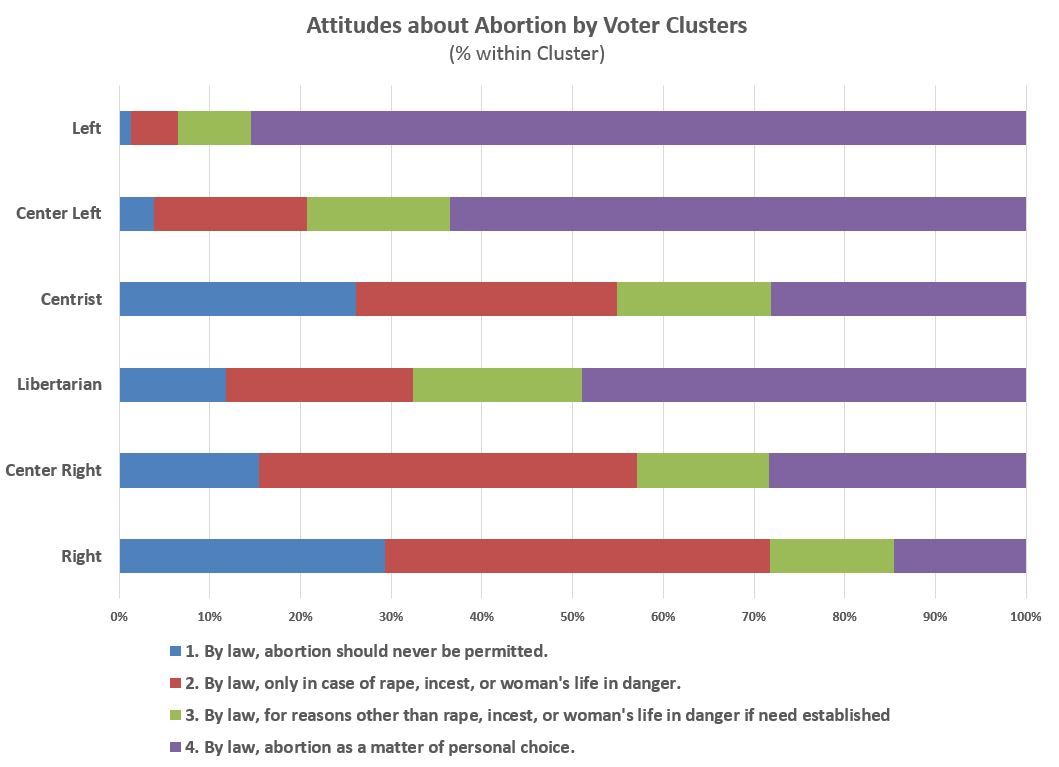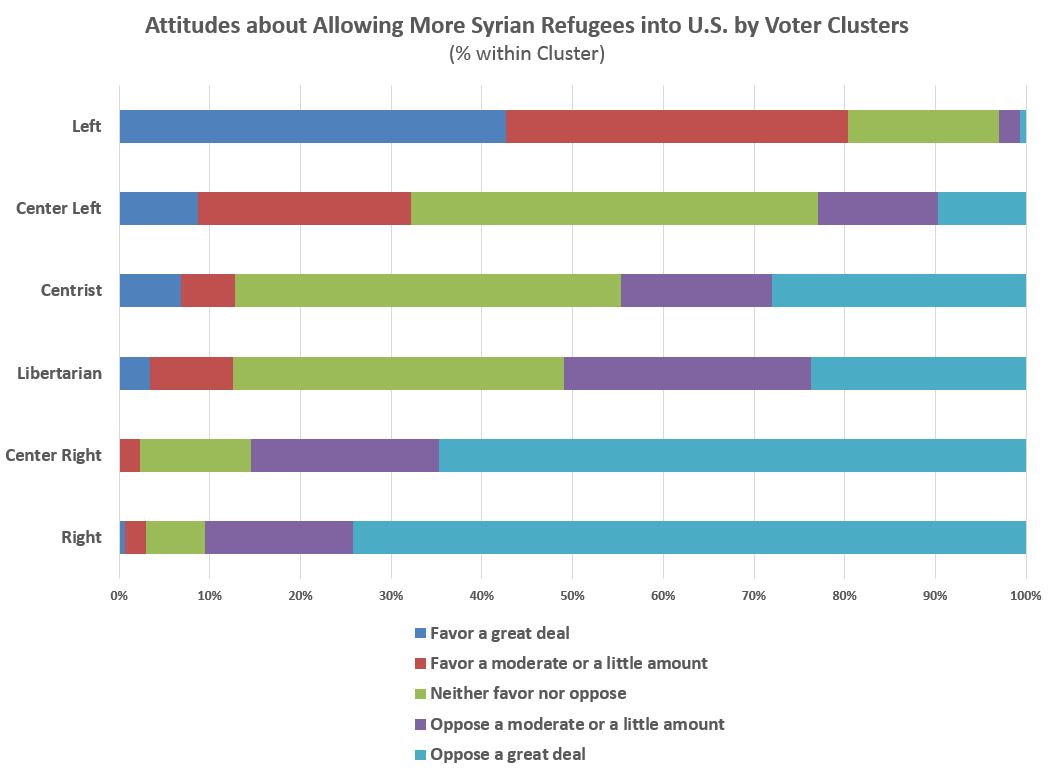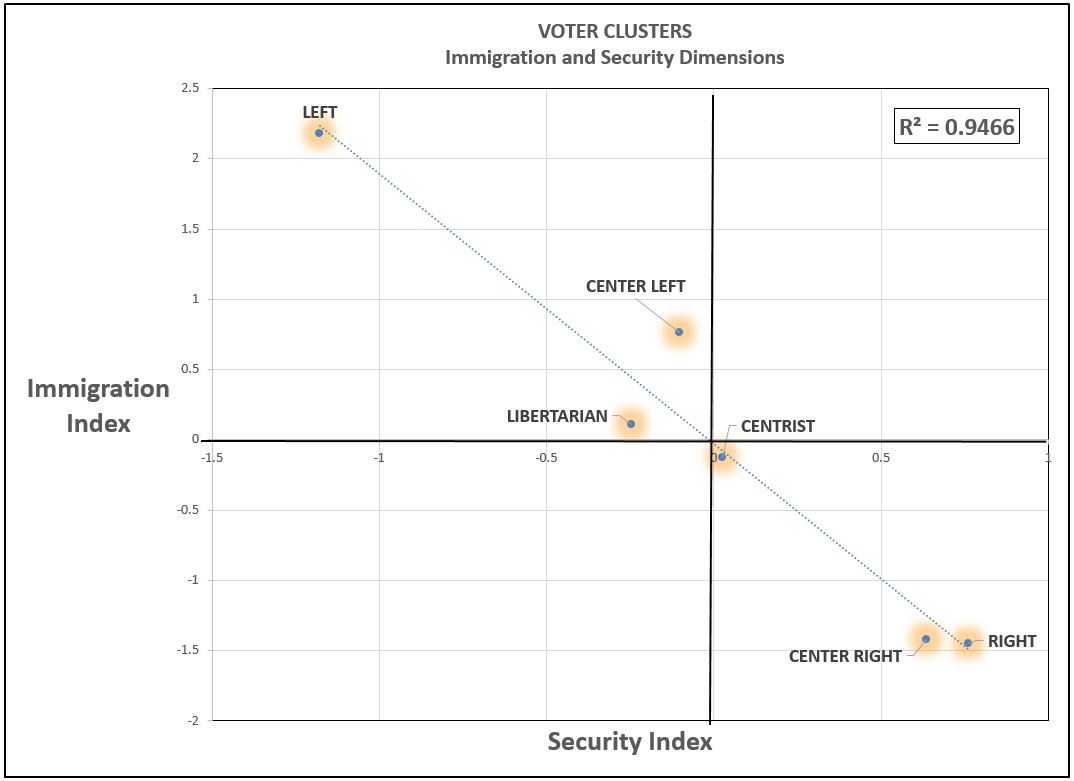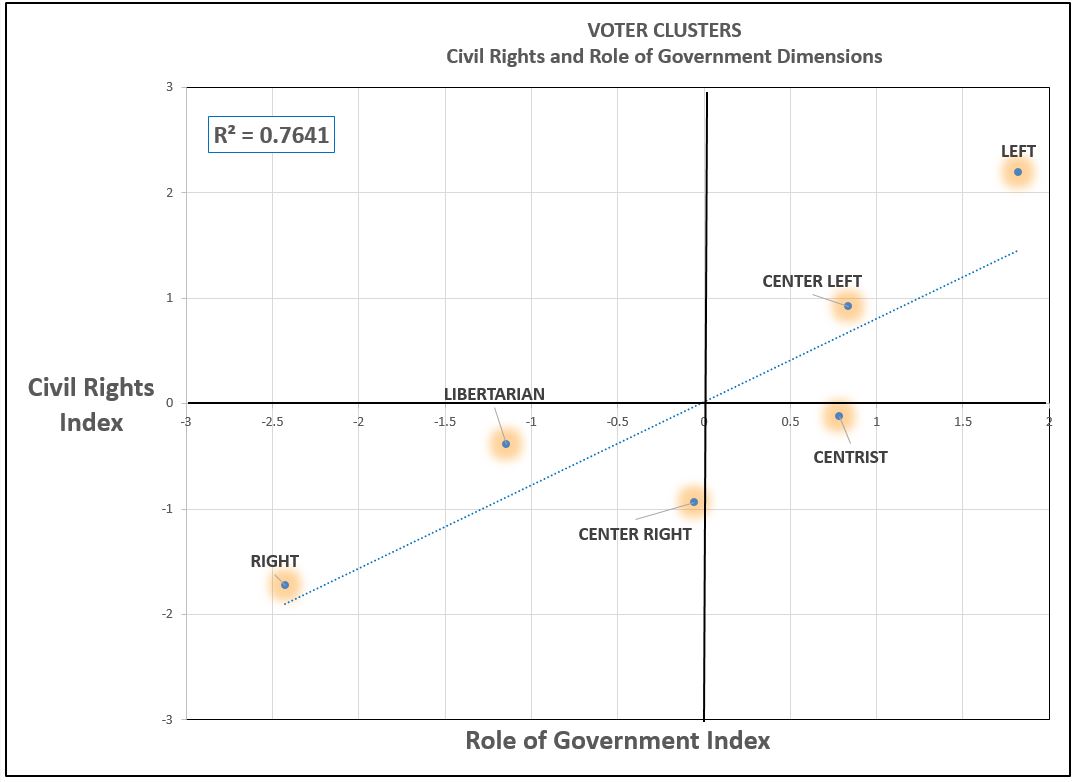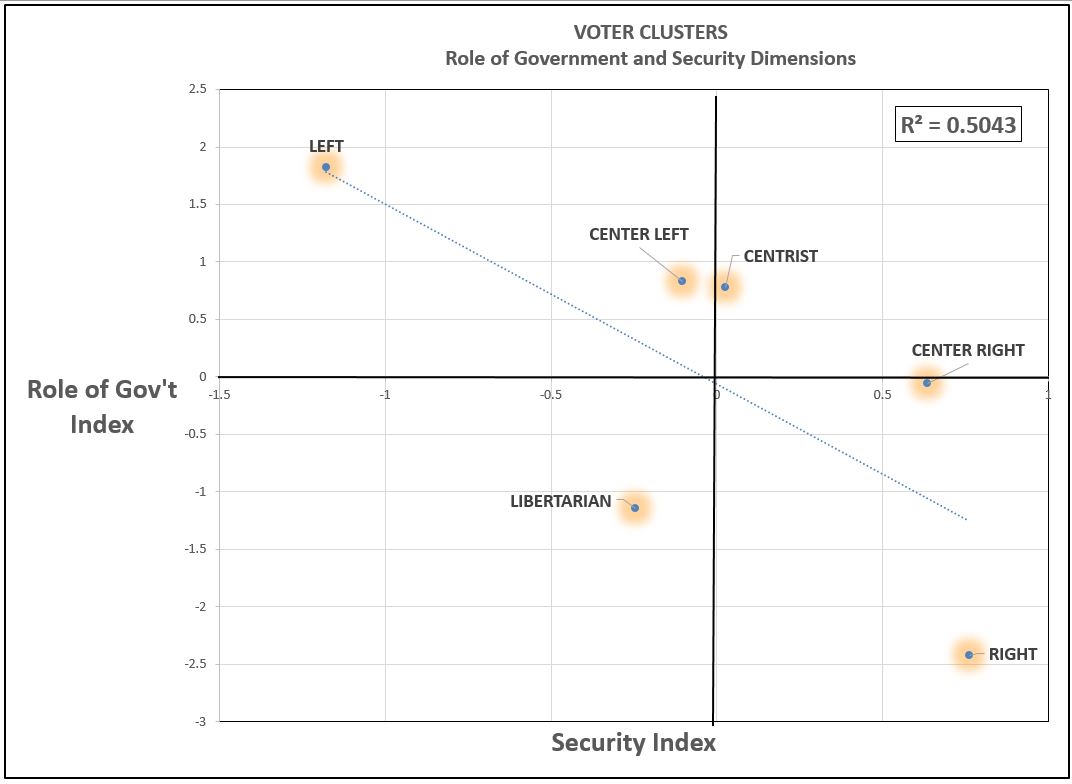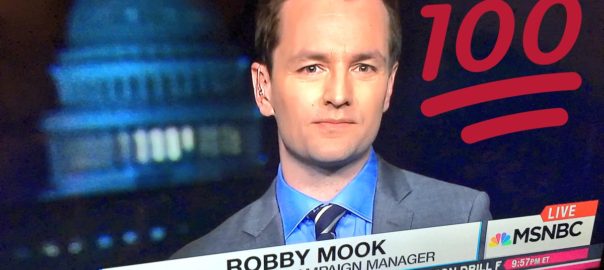By Kent R. Kroeger (Source: NuQum.com, September 19, 2017)
{ Feel free to send any comments about this essay to: kkroeger@nuqum.com or kentkroeger3@gmail.com}
Just when we think we can finally move past Hillary Clinton, she finds a way to pull us back in.
Cue Michael Corleone:
The View is a banal and usually harmless syndicated morning talk show that recently had Hillary Clinton on promoting her book, What Happened.
It was painful to watch. But feel free to give it a try:
I resist calling Hillary Clinton a liar anymore as Donald Trump’s post-truth era has rendered the term punchless. Besides, what she does so well, and that she put it on display in front of The View’s fawning hosts and audience, is crafting plausible fables that serve some larger, typically self-serving, political purpose. She is a fabulist, and while she is a joyless politician, she does enjoy (it shows in her eyes) tearing down her enemies…and she has a bushel and a peck of enemies.
IF THIS WERE RUSSIA, BERNIE SANDERS WOULD BE DEAD ALREADY
Her recent book release and subsequent promotional appearances have a clear mission: Destroy Vermont Senator Bernie Sanders’ credibility and with it the influence of the progressive wing of the Democratic Party.
She believes (with little empirical merit) that progressive Democrats, led by Sanders, caused her to lose the 2016 election. Sure, Comey and Russians share some blame in her mind, but Bernie came before both of those proximal causes. Bernie is the distal, and most culpable, cause of her defeat and she is not about to forgive and forget…and she is enlisting every mainstream Democrat (i.e., any Democrat who cares about raising money — which is all of them) to join in her dark quest to crush Bernie Sanders and the progressives.
The apparent lurch leftward by congressional Democrats is a chimera meant to sedate the party’s progressives, not embrace them.
Enter Bernie Sanders’ plan for universal health care in the U.S.
It is extraordinary to see how many mainstream Democratic Senators (Al Franken, Kamala Harris, Kirsten Gillibrand, Cory Booker and others) suddenly falling all over themselves praising and endorsing Bernie Sanders’ policy ideas, particularly universal health care.
Democratic leaders can’t say the word “progressive” often enough.
Even Hillary Clinton’s new website — hillaryclinton.com — says “her 2016 campaign for president…laid out a comprehensive progressive vision for America’s future,” and goes on to say she supports “universal, quality, affordable health care for everyone in America.”
She was the true progressive in the 2016 Democratic nomination race, according to her website’s storytelling. Her website even claims: “She worked across the aisle to help pass the Children’s Health Insurance Program (CHIP). Today, it covers 8 million kids. She has never given up on the fight for universal coverage.”
Hillary is now responsible for working across the aisle to get CHIP passed in 1997?
This is the Art of the Fable Clinton has mastered over a long public career. For the young 20-something and 30-something Hillary supporters today, they have no reason to question her CHIP claim. For those of us working in Washington, D.C. at the time and who followed the CHIP legislative saga, the story is far more complicated and not a wholly positive one for Hillary.
The story must begin with the titanic failure of the Health Care Reform Task Force led by the First Lady in 1993. It was her first national executive role and it didn’t go well.
Hillary blamed the insurance companies and physician lobbies for the failure to pass a national “managed care” system in 1993 (yes, she’s always loved blaming others), but many policy experts also said her disproportionate penchant for secrecy in the policy process contributed to the insurance companies and physicians taking their grievances public.
The 1993 Health Care Reform Task Force turned into a hot mess, and its impossible not to hold the First Lady partially accountable for her lack of executive skills to manage the process.
“The scheme was fatally over-complicated.,” wrote historian James Fallows a few years after the 1993 health care reform debacle. “The proposed legislation, 1,342 pages long, was hard for congressmen to read and impossible for anyone except the plan’s creators, Hillary Rodham Clinton and Ira C. Magaziner, to understand.”
Enter Massachusetts Senator Ted Kennedy.
The Massachusetts Senator devoted his career to pushing for a more rational, national health care system, particularly with respect to poor children. Towards the end of his life he would tell people his greatest mistake was not accepting Richard Nixon’s offer to create a universal health insurance system (similar to Obamacare in its focus on mandating and subsidizing the purchase of health insurance, but on a much more comprehensive scale).
However, due to the deep political divide in the country at the time (sound familiar?), Kennedy rejected the Nixon overture. It was not until Bill Clinton’s presidency that the issue was again taken up seriously by Congress.
A fair assessment of Hillary’s role in CHIP must acknowledge that she pushed her husband to keep the CHIP program alive during budget negotiations in the mid-1990s; and though CHIP was dropped out of the 1996 budget during the administration’s negotiations with Trent Lott and the Republicans, it was revived and ultimately passed for the 1997 budget.
Kennedy’s senior health policy adviser, Nick LIttlefield, sums up Hillary’s contribution as such: “She wasn’t a legislator, she didn’t write the law, and she wasn’t the president, so she didn’t make the decisions — but we relied on her, worked with her and she was pivotal in encouraging the White House to do it.”
Basically, she lobbied her own husband.
Credit-grabbing is not uncommon in Washington, D.C. Hillary certainly wasn’t the first politician to take more credit than warranted for a policy success, but she angered the “Lion of the Senate” who felt her arrogance had not been earned.
There is a reason Ted Kennedy did not endorse Hillary’s candidacy in 2008.
As for those Senate Democrats endorsing Bernie’s “Medicare-for-All” plan, can we assume it is genuine? Yes. I believe these Democrats have some affinity with the idea a universal health care system. The Sanders bill proposes an incremental approach to rolling out universal health care, building upon CHIP’s existing administrative structures to cover all U.S. children, and expanding over time to eventually cover all Americans.
Though still lacking explicit funding mechanisms, the Sanders bill has brought genuine optimism to those Democrats that believe a single-payer, universal health care system is the most logical and efficient approach to health care delivery. The Nation details Sanders’ newly-found skill in building support for his bill within the Senate. [For some reason, the media is ignoring Michigan Representative John Conyers who has periodically offered a universal health care plan for over ten years now.]
But don’t believe for minute that this country is on the cusp of supporting and implementing “Medicare-for-All.” The polling data shows growing support, but these survey questions are prone to framing biases. For example, if the potential costs in terms — such as higher taxes or more government control over health care — are included in the question, support for universal health care falls.
[Henry Aaron’s 2010 book, The Problem that Won’t Go Away: Reforming U.S. Health Care Financing, offers some insights this attitude volatility with regards to health care.]
Democratic progressives need to keep their expectations low regarding Sanders’ plan. It will not go anywhere, which is one reason those Senators co-sponsoring it are not putting much at risk (for now). It was very telling that California Senator Kamala Harris’ endorsement of the Sanders plan included the rationale that it “makes sense from a fiscal perspective.” She is smart –which is why she will be the next president — because she has left herself a nice little escape hatch once the funding mechanisms for Sanders’ plan are revealed. When the Republicans start crying about Sanders’ plan not making fiscal sense and putting too much power in the incompetent hands of the government, expect a lot of these Senate co-sponsors to jump ship.
Hillary understands this issue better than anyone in the Democratic Party. That is not hyperbole, nor is it praise. It is her deep knowledge in this policy area that causes her to consider any attempt at a universal health care system in the U.S. to be a fools errand.
Frustrating to congressional Democrats is that, at the moment in history when the Republicans are drowning in political ineptness as they try to repeal Obamacare, and when public support for a more comprehensive health care system is near all-time highs, Hillary is betraying her own party.
Hillary is not a team player. She never was and never will be.
Under the harsh klieg lights of daytime television, Hillary’s book tour is a public shit storm descending on the disloyal progressives in her own party (not to be confused with the loyal progressives in the party –that is, anyone in senior management at Goldman Sachs, Oscar de la Renta, Barbara Streisand, Planned Parenthood President Cecile Richards, CNN’s Jake Tapper, etc.). Hillary is dedicating the end of her public life to calling her opponents “misogynists,” one of the most contemptible acts in politics. Its what politicians do when they have nothing left to offer.
Apparently, it is not acceptable to dislike Hillary Clinton on her merits.
As Hillary undoubtedly knows — she is after all married to the greatest political savant of our generation — the time to kill the unholy progressive wing is now, when they are distracted by that shiny object called Donald Trump. In an ironic way, Clinton’s 2016 defeat may well mark the beginning of the end for the neo-progressive movement in the Democratic Party.
Does Hillary care if a real attempt to pass a national health care system is one of the victims of her new TV thriller, Kill Bernie (Vol 2.). Probably not. Like me, she’s too cynical to think it would pass anyway.
My father once said Bill Clinton was the best Republican president of his lifetime. Working-class Americans are still seeing the negative consequences of Bill Clinton-era policies labor and trade policies.
In terms of economics and foreign policy, Hillary is even farther to the right of Bill and one of the byproducts of her campaign to discredit Bernie will be to keep the corporatist Democrats like her firmly in control.
Progressive America, keep wearing the pussy hats while your party betrays you again courtesy of the Clintons, Wall Street’s investment banks, the insurance industry, the defense/foreign policy establishment and the neoconservatives at the Center for a New American Security — who are already drawing up plans for the next regime change war in the Middle East — probably Syria, but don’t rule out Yemen.
REVENGE IS A DISH BEST SERVED ON THE TALK SHOW CIRCUIT
Hillary is known to like lists. She undoubtedly has a list of people she wants to see suffer for her 2016 loss. You see the blood lust in her eyes when she talks about them: Jim Comey, Trey Gowdy, Matt Lauer, Tulsi Gabbard and, of course, Bernie Sanders. It is starting to border on bat shit crazy.
If her sycophants still believe Hillary could run for the presidency in 2020, they need to let go of that dream. She is making herself toxic to half of the Democratic Party. Deliberately so. And she clearly doesn’t care anymore. The Clinton family has scores to settle..and the family’s business is going to get settled.
Cue Michael Corleone again:
[I am not suggesting Hillary is going to have people killed. Such baseless accusations are what we have Ann Coulter and Joy Reid for.]
IS HILLARY GOING TO PULL A RICHARD NIXON MOVE ON US?
In the September issue of The New Yorker, David Remnick reports Hillary’s closest confidants view her mental state as “angry, confused, bitter and sad.”
The same psychological assessment could have been made about Richard Nixon in 1962 after his defeat in the California gubernatorial race — but Nixon was far from done and he did come back to win the presidency six years later. Nixon was also just 49-years-old in 1962 when he famously said that the press wouldn’t “have Nixon to kick around any more.”
Luckily for the press, Nixon was lying.
If The View is available in hell — and why wouldn’t it be? — Nixon must recognize the many characteristics he shares with Hillary.
Well, let us think about that first. An informal checklist comparison might help:
- Intelligent? Yes, both are intelligent.
- Trained lawyers? Yep and yep.
- Charismatic? Uh….put that down as two ‘No’ answers.
- Secretive boardering on unethical? Absolutely, both get an enthusiastic thumbs up.
- Criminally corrupt? Nixon gets an A- since, at best, he was only going to get nailed on an obstruction of justice charge; Hillary receives an ‘incomplete.’
- Paranoid? Sweet Jesus, do you even have to think about this one? Two more yeses.
- Endured a humiliating marriage to a documented sexual predator, and then served as the sword’s point in character assassination campaigns against the spouse’s accusers, while knowing the accusations were mostly true? Hillary wins on this in Crimson Tide versus Troy State fashion.
Hillary is very different from Richard Nixon. Despite all of his other deep personality flaws, Nixon faithfully loved his wife, Pat, to the very end.
HILLARY WILL NOT RUN AGAIN, BUT WHO IS SHE TAKING DOWN WITH HER? THE DARK LORD HIMSELF, BERNIE SANDERS.
Hillary will not be back in 2020 to give it one more go-around. She will, however, play footsie with the nomination process, at one point acting like she might jump in — given the weak candidate choices offered, in her opinion— and then, once the field has been narrowed to two or three candidates, encourage the media to hold watch over who she may or may not endorse for the nomination.
The media attention will make her feel good. Not good enough to put down the Chardonnay, but good enough to suppress her now autonomic reflex to grab the nearest heavy, sharp object and throw it at Bill’s head when he walks into a room.
Yes, Hillary tells us in her book, What Happened, when it was clear she would lose to Trump, she laid down next to Bill on a bed where they just ‘breathed together” in silence.
Its a heartwarming story. I may even believe it. I wasn’t there. And, to be fair, Bill is the only person Hillary has not blamed for losing the 2016 election. Never mind that Bill’s boneheaded, politically tone deaf tarmac meeting with U.S. Attorney General Loretta Lynch ignited a genuine media firestorm about possible collusion between the U.S. Justice Department and the Clinton campaign over a criminal investigation into Hillary’s alleged use of a private email server for transmitting classified information.
Don’t worry, I’m not going down that road. If the FBI says there is nothing to look at here, then there’s nothing to look at it. Move along.
What I can’t ignore are the pernicious myths Hillary promotes today to rationalize her failure to win the 2016 election.
There are so many, but I will concentrate on the biggest myth she offered to the uncritical women hosting The View, because it features Hillary’s base, most self-destructive pathology. She is a professional victim, boarding on clinical paranoia. The American Psychiatric Association’s Diagnostic and Statistical Manual of Mental Disorders identifies the major symptoms of this personality disorder as…
- A pervasive, long-standing suspiciousness and generalized mistrust of others,
- Hypersensitive and unable to handle criticism,
- Vigilant scanning of the environment to validate the paranoia,
- An eager observer of other’s actions and motives, and
- Prone to spontaneous violence.
That may describe 50 percent of the people we know (including ourselves), but we see those symptoms on vivid display in Hillary’s appearance on The View. No, she didn’t hit anybody with a lamp, but she has a maniacal need to find more causes than are necessary to explain her 2016 defeat.
The Russians, the Comey letter and Robbie Mook’s awful tactical resource allocation decisions are the biggest non-Hillary factors in her defeat.
(Yes, I understand. If Hillary hadn’t recklessly set up a private, home-based server to handle classified documents there wouldn’t have been a Comey letter. So, assign 50 percent of the Comey letter blame on Hillary, 30 percent on Loretta Lynch for not allowing a genuine investigation, and the rest blame on Comey for losing control of a bad situation.)
A consensus is forming among serious political analysts that the Russian information operation against the 2016 election made it difficult for the Clinton campaign to form a coherent, stable message. It is doubtful definitive evidence will ever exist to quantify the impact of Russian interference, but our gut instincts are probably correct: The Russians interfered and it impacted the race.
As for the Comey letter, its timing was terrible. And while the news on the Obamacare premium hikes may have started Clinton’s late campaign slide, the Comey letter’s appearance in late October exacerbated the decline.
HILLARY IS RIGHT. WE NEED TO KNOW EXACTLY WHAT THE RUSSIANS DID IN 2016. BUT IS GOING ON “THE VIEW ” TO STAB SANDERS IN THE BACK THE WAY TO DO THAT?
Clinton’s friendly-fire approach to party building isn’t going to bring long-term electoral success to the Democrats. She is lashing out at everyone she perceives as either being an enemy or an insufficiently loyal votary. As we are finding out, its a long list and likely to get longer.
(How did Bill Clinton not make that list? Give it time my friend, give it time.)
This type of over-identification of causal factors is to historical analysis what Dairy Queen’s Blizzard Cake® is to childhood nutrition.
But Hillary Clinton can speak for herself. So here is what she said on The View about Bernie Sanders that launched me out of my shoes: “I know what it is like to lose because I lost in 2008 to President Obama. As soon as I lost I turned around and I endorsed him, I worked hard for him.”
What the hell was she talking about?
I will be kind and assume she just mis-remembered what happened in 2008. Let me refresh our collective memories on that race.
Hillary’s official suspension of her 2008 campaign occurred on June 7, 2008. The last Democratic primaries were on June 3rd in Montana and South Dakota. Furthermore, any outside chance Hillary had at winning the nomination ended on May 6th with her defeat to Obama in the North Carolina primary.
Why didn’t she concede then? Why did she continue to pressure Democratic super-delegates to rescind their pledges to Obama using the racially charged argument that Obama would not win in the general election?
Hillary targeted white voters with so many dog-whistle attacks on Obama that even former Klansman-turned-U.S.-Senator Robert Byrd (WV) had to step in and tell Hillary to cool her jets.
Hillary doesn’t stop with just attacking Bernie Sanders, who she likes to remind us is “not even a Democrat.” [Which does beg the response, “Forty-three percent of Democratic primary voters preferred a ‘non-Democrat’ to you.” That is not a ringing endorsement of your candidacy. A can of tuna might have garnered 10 percent of 2016 Democratic primary voters.]
But, no, Hillary doesn’t just attack Bernie, she attacks Bernie’s supporters, who she claims disproportionately supported Trump over her in the general election.
The truth? About 1-in-10 Bernie Sanders supporters voted for Trump and another 10 percent voted for Jill Stein or Gary Johnson. Enough in Wisconsin, Michigan and Pennsylvania to swing the election back to Clinton.
By historical standards, the 2016 Democratic defections to the GOP dark side (or to third parties) were not unusual.
In 2000, 11 percent of Democrats voted for George W. Bush in the general election. A similar percentage of Democrats went to George W. Bush in the 2004 general election.
In fact, the historical outlier case might be Hillary Clinton’s primary supporters in 2008. One study determined that around 25 percent of Clinton primary voters ended up voting for Sen. John McCain in the general election.
Of course, all of this gets muddled due to states with open primaries where ‘independents’ and Republicans can vote in Democratic primaries. Those Democratic primary voters, of course, are much more likely to vote Republican in the general election.
But that is the problem with Hillary’s complaint towards Sanders supporters. That is the game played every four years. As Sanders said in reply to Hillary’s attack, ‘That is what happens in politics.”
Hillary Clinton knows this. If there is one political couple that obsesses about poll numbers and voting patterns, it is the Clintons. At some point, she must have been told a large percentage of her supporters in 2008 bailed on Obama.
It is just numbing how easy it is for Hillary Clinton to tell nuanced fabrications and sometimes, dare I say it, flat out lies. Journalist William Safire famously labeled Hillary a ‘congenital liar.’ He was being kind.
For Clinton to now launch the disloyalty indictment against Sanders and his supporters leaves many us exhausted.
WHEN WILL CLINTON AND THE DEMOCRATS STOP ACTING LIKE THE DONNER PARTY?
Does Hillary want to see the Democrats divided going into 2018 and 2020? If she does, then she needs to keep doing what she is doing.
Even as I agree that intramural disagreements within the Democratic Party should never be shut down out of party “loyalty” — that would be particularly hypocritical on the part of a Bernie supporter — there is a difference between an intra-party dispute and what Clinton is doing.
Clinton continues to eat her own young. She is slashing through the Democratic Party like Anakin Skywalker did with the Jedi younglings in Revenge of the Sith.
Sorry, gotta take one more movie break (Enjoy!):
“Master Clinton, there are too many Republicans in Congress. What are we going to do?”
Hillary is not engaging in a constructive critique of the current Democratic Party (though she does occasionally offer some valid insights on the fiscal realities constraining Bernie’s Cheesecake Factory menu of policy ideas). Instead, she is telling Bernie’s supporters that they are an invasive species that need to be eradicated from the Democratic body.
And, frankly, many of Bernie’s supporters would reverse the argument and say the neo-liberal corporatists like Clinton are the invasive species.
This argument is unwinnable. Neither side holds the high ground. The progressive far left is trying to convince us that the Democrats are unified in their opinions and attitudes and its only the “process” (such as Democratic National Committee election rigging) that divides the party.
That is weaponized bullshit straight from the same East and West Coast elites that happily looked away when Barack Obama’s presidential campaigns became too beholden to banking, insurance, and high tech corporatist interests.
Today’s Democratic Party is deeply divided (though not as divided as the Republicans!), but now is not the time for a party purge. This isn’t Stalin’s Russia.
The Democrats’ current configuration file is improperly set up to ensure consistent electoral success going forward. That problem list is almost as long as Hillary’s personal hit list. The problems include:
- Not attracting enough working-class Americans (of any ethnic/racial background)
- Identity and rights issues used as tools for exclusion, not inclusion
- The Democratic brand of government-centered solutions and civil rights activism is not built for success in the 21st-century
- Democratic messaging and themes are confrontational, not aspirational
- Support base too geographically clustered
- Current party leaders need to step aside and allow in some new blood
- Fail to embrace opinion diversity
- Stop obsessing about Trump and the Russians and focus on Americans
I could go on….
But I need to get back to the Hillary Clinton’s 2017 Slaughterhouse Tour. Its just too much fun to watch. Its like Game of Thrones without the boring dialogue scenes. She’s Darth Vader in the hallway scene at the end of Rogue One.
I hope this Hillary Clinton never goes away…
About the author: Kent Kroeger is a writer and statistical consultant with over 30 -years experience measuring and analyzing public opinion for public and private sector clients. He also spent ten years working for the U.S. Department of Defense’s Office of the Under Secretary of Defense for Personnel and Readiness and the Defense Intelligence Agency. He holds a B.S. degree in Journalism/Political Science from The University of Iowa, and an M.A. in Quantitative Methods from Columbia University (New York, NY). He lives in Ewing, New Jersey with his wife and son.
